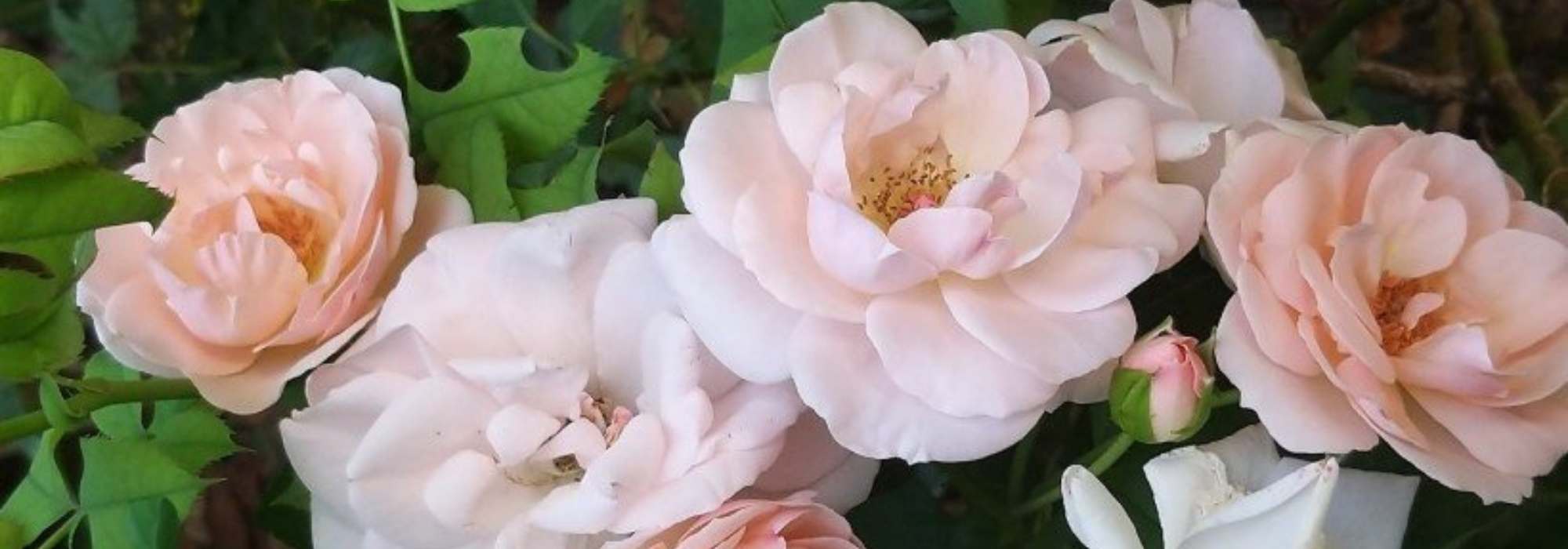
Rose bush hedge: the 10 best varieties
Our selection to beautify and create dissepiments in your garden
Contents
Less heavy than a traditional hedge, yet more aesthetic and more colourful, a rose hedge presents an extremely attractive alternative for dividing spaces. Although it does not truly screen prying eyes and should be planted in a sheltered spot, it remains a very popular choice thanks to its character, both cheerful and decorative.
The rose for hedges can be compact, reach up to 1.50 metres in height and sometimes more, but it can also prove very hardy: essential qualities for creating an entirely natural, effective and long-lasting boundary in the garden. As for colours, you can have fun with shades of red and pink, but also white, yellow, purple and many other tones. And if you particularly enjoy the pleasant scents given off by the flowers, know that rose hedges can give off a wide range of scents.
You don’t need green fingers to establish your rose hedge, you just need to follow a few planting tips, notably regarding spacing between each young plant, so as to encourage development of the roses and their flowering.
Then, simply cut off faded flowers from time to time and prune dead branches: very easy maintenance for a hedge that will amaze you through the seasons, with its flowering and colour variations!
Unsure which essential oils to choose? Discover 10 hedging roses specifically selected for you, with some tips on how to care for them.
Rugosa rose 'Rubra': single yet remarkable beauty
rose rugosa ‘Rubra’ reaches about 1.25 metres at ripeness (up to 1.50 metres) and is sometimes also called “Japanese rose”. From June until mid-autumn, it reveals magnificent fuchsia flowers, delicately scented, characterised by crinkled petals.
This variety is one of the few among botanical roses to be perpetual – and therefore perfectly suited to a rose hedge project. Considered a floriferous rose, the rugosa rose charms with its robustness and generosity. Even better, it also produces hips that can simply be picked to prepare delicious homemade jellies.
Ideally, this rose is planted in March or October, and it adapts perfectly to all climates. It is regarded as an option within reach of all gardeners, including amateurs: simply remove old branches after winter, at least once every two years.
Among old roses, mention can also be made of the old rose ‘Grootendorst’, which develops very quickly into a pretty shrub and easily reaches more than one metre across (and 1.50 metres in height).
Rosa glauca botany rose: for a tall, majestic hedge
Botanical rose Rosa glauca, or rubrifolia, reaches a height of 2.50 metres at ripeness, making it a perfect alternative for a generous rose hedge. The colour of its foliage is an undeniable asset: between nicely bluish (even purplish) tints and the pink of the small flowers, not forgetting the appearance of small decorative red fruits in winter, there is a profusion of wonderful colours throughout the year.
Moreover, the robust and hardy nature of this bush makes it a strategic choice for a rose hedge: it tolerates sun very well, but also performs well in partial shade.
Risk of disease is fairly low with this rose: however, if you notice spots appearing on leaves, simply remove them quickly to avoid any problem. Water generously after planting. Once established, it requires no care, nor any particular pruning. However, if you want to keep a compact appearance, you can prune in spring once risk of frost has passed, but you will remove the flowering.
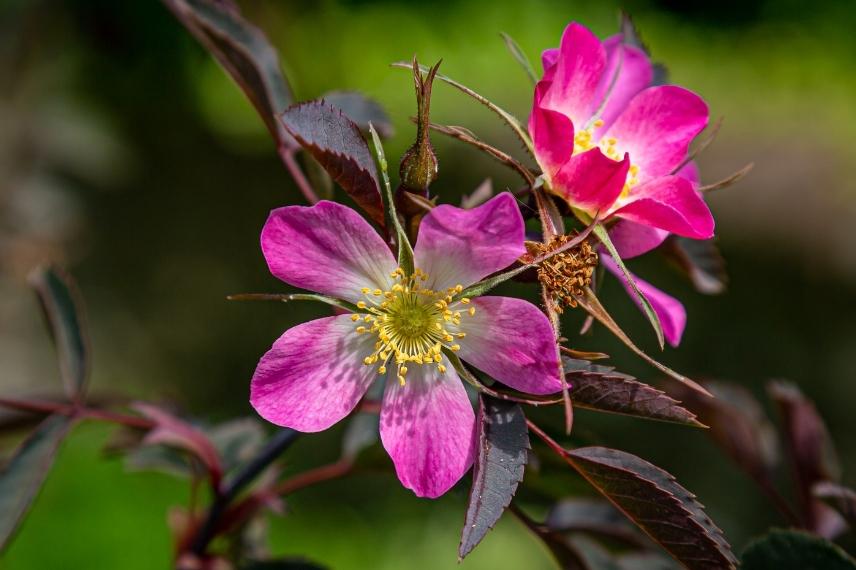
Botanical rose Rosa rubrifolia
Discover other Roses for hedges
View all →Available in 1 sizes
Available in 0 sizes
Available in 1 sizes
Available in 1 sizes
Available in 1 sizes
Available in 1 sizes
Available in 1 sizes
Available in 1 sizes
Available in 1 sizes
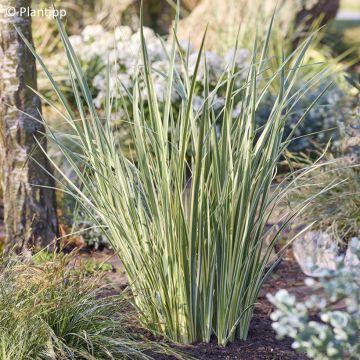
Available in 1 sizes
Large-flowered rose 'Queen Elisabeth': for lovers of timeless classics
Are you afraid of choosing a hedge rose that you will tire of after a few years? If so, opt for the great classics! With the large-flowered rose ‘Queen Elisabeth’, you are relying on a safe bet, a timeless classic.
At ripeness, it reaches a fairly modest height of around 1 to 1.2 metres. By contrast, it is rather imposing in width, since it offers a spread of up to 60 cm, and some shoots can sometimes flirt with 1.80 m.
Scentless, these roses are perfect for those who want a pretty but discreet hedge, between elegance and sobriety. The pale pink of the flowers and their size make this variety one of the most appreciated essential oils for creating pretty bouquets.
It is important to point out that rose ‘Queen Elisabeth’ is characterised by a rather irregular habit. It nonetheless remains durable, not to mention vigorous appearance, sturdy even when facing more difficult climates.
Very disease-resistant, this rose must be pruned for better flowering, when shoots have flowered. Also plan a preparatory pruning in autumn, before the major spring pruning.
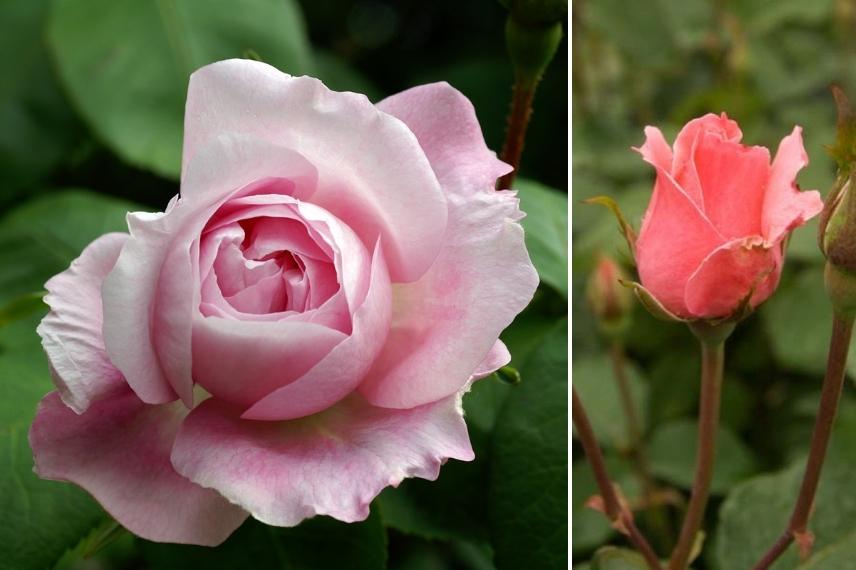
Famous rose ‘Queen Elisabeth’
Read also
Pruning old garden rosesClimbing rose 'Trier': for an understated, elegant look
Climbing and deliciously scented, variety ‘Trier’ has all the qualities of a hedging rose. It charms with the pretty contrast of dark foliage and cream-white flowers revealing a yellow centre.
This rose is a must for hedges, notably because of its vigour and compatibility with all soils. The natural habit proves a real asset, allowing you to easily combine it with other varieties to play with colours and shapes.
If you plant in groups of three, you’ll create a single, even more generous bush… and you can repeat this arrangement along the length of the area where you wish to establish a hedge.
The ‘Trier’ rose is much appreciated for being easy to care for. Highly disease-resistant, it only requires occasional pruning of a few short and a few long shoots.
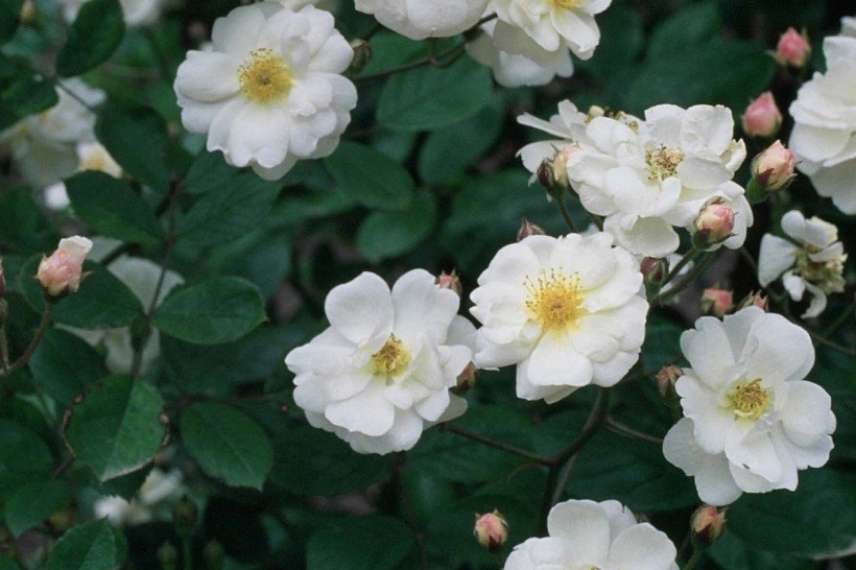
Flowers of the climbing rose ‘Trier’
Shrub rose 'Centenaire de Lourdes': for generous flowering
With its beautiful round, subtly scented roses, shrub rose ‘Centenaire de Lourdes’ is renowned for its excellent floribundity. Between June and October, it reveals beautiful, very dense flowers with a very pleasant rose scent when they open. Flowers take on a pastel hue over the days, which means you will never tire of your rose hedge, always different in appearance… but perpetually delightful!
This variety is particularly suited to novice gardeners. Easy to grow, simply plant at a density of 1 per m2 and cut back stems by a quarter of their length at the end of winter.
Reaching 1.90 metres in height, your hedging rose will have a spread at ripeness of about 90 cm and, above all, rapid growth… A great choice for impatient gardeners!
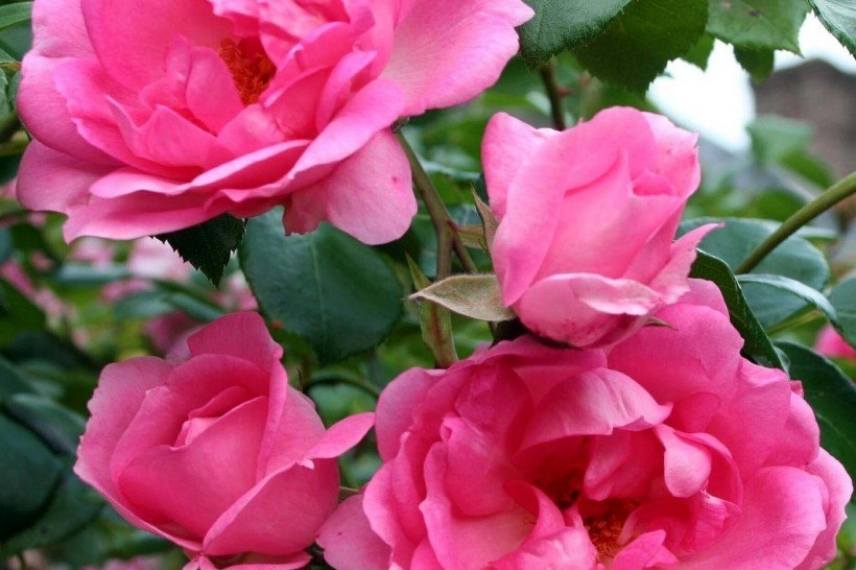
Climbing rose ‘Centenaire de Lourdes’
David Austin 'Wild Eric'® rose: for a hedge with a captivating fragrance
Directly derived from Rosa rugosa, the English rose ‘Wild Eric’® stands out for its remarkable vigour: it grows without trouble in all climates, it resists cold and disease and even manages to survive when planted on poor soil.
Each flower gives off a delightful scent and displays a deep, beautiful pink colour. Where many varieties struggle to thrive, you can rely on it.
Typically reaching 1.25 metres in height, this variety is best pruned at the end of winter, cutting shoots back to 3–5 eyes above the soil. Even novice gardeners can achieve excellent results with this easy-to-care-for rose.
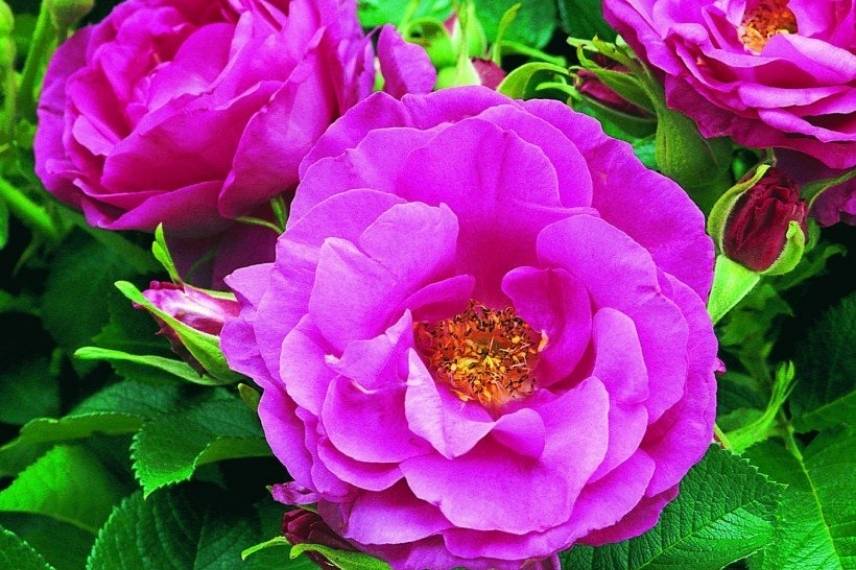
English rose ‘Wild Eric’ ®
Heritage rose 'Joseph’s Coat': for a beautiful palette of colours all year round
Initially yellow, the flowers of the antique rose ‘Joseph’s Coat’ turn orange, then red and finally purplish-pink. Throughout the year, this remarkable variety offers a palette of colours, each more attractive than the last.
Very vigorous, this hedging rose reaches 1.80 metres in height and 1.50 metres across. It blooms especially around June, with flowering continuing throughout summer into early autumn (October, November) when the soil remains cool. More surprisingly, parts of the flowers not exposed to the sun’s rays retain a paler colour, photosensitisation being particularly marked on this rose.
This antique rose ‘Joseph’s Coat’ tolerates a wide range of soils and is very disease-resistant. Pruning is not essential, but can be useful at the end of winter. Ensure planting density of 3 per m2.
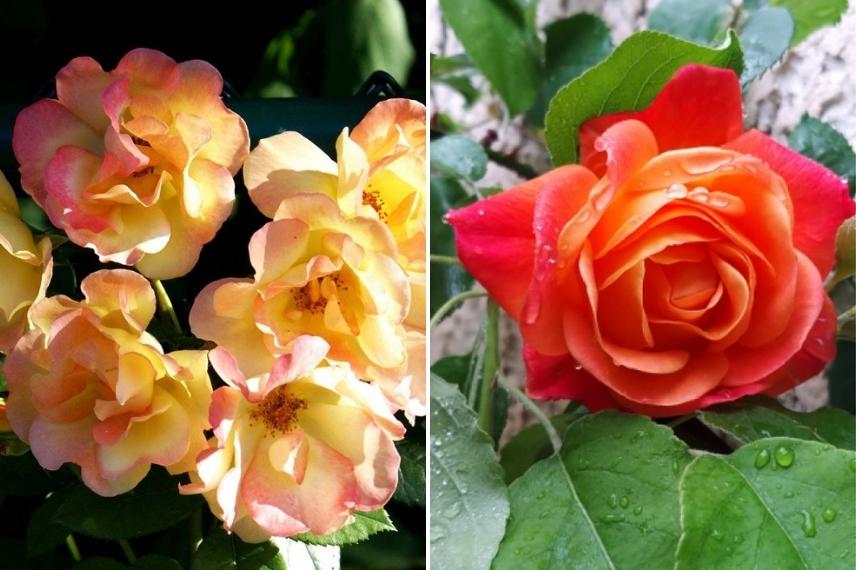
Evolving colours of the rose ‘Joseph’s Coat’
Marguerite Hilling: an old rose for a delightfully cottage-style look
Dense habit of heritage rose ‘Marguerite Hilling’ is a major selling point for anyone wanting a generous rose hedge. Petal colour ranges from fresh pink inside to mauve on outer edges, with a centre of nicely golden stamens.
This species charms with continuous flowering, even more intense at start and end of summer. Well proportioned at ripeness, it reaches 1.25 metres in height and 1.50 metres in spread.
This lightly scented rose should be planted in sun or in light shade. Watering should be generous at first, then regular during first weeks. Afterwards, simply carry out essential pruning to remove old wood to prevent rose from becoming straggly.
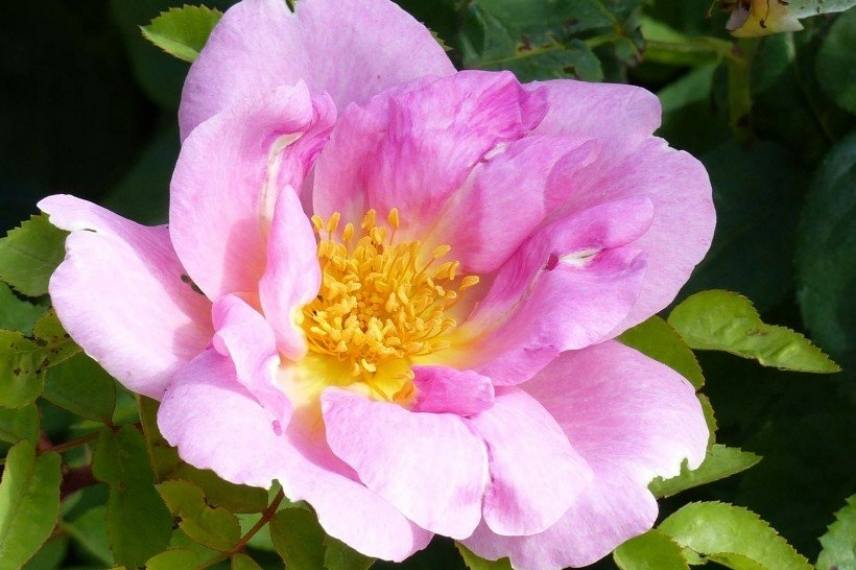
Rose ‘Marguerite Hilling’
Shrub rose 'Astrid Lindgren': combining delicacy and generosity
Flowers of shrub rose ‘Astrid Lindgren’ deliver a delicate raspberry scent, while displaying a beautiful pink colour, rather tangy after opening and paler at ripeness. Floribundity of this species has already been awarded prizes across Europe, it is a very renowned essential oil!
If you dream of a hedge of roses mixing several varieties, know that you can create a planting bed with other alternatives such as compact abelias, mock oranges or shrubby salvias, for example.
At ripeness, shrub rose ‘Astrid Lindgren’ reaches a height of 1.80 metres and a spread of 1.20 metres. To benefit from this generosity typical of this variety, regularly remove faded flowers to stimulate emergence of new floriferous shoots. In late winter, also remember to cut back stems (around a quarter of their original length).
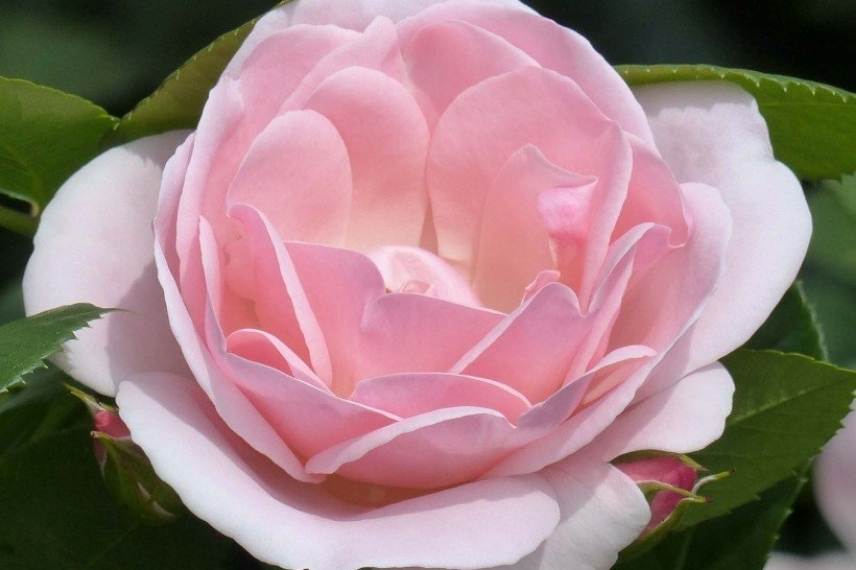
Shrub rose ‘Astrid Lindgren’
'La Sevillana'® rose with clustered flowers: for a massive, flamboyant hedge
Dreaming of rose bushes for hedging in vibrant colours? In that case, the variety ‘La Sevillana’® will doubtless meet all your expectations. Considered exceptionally floriferous, this bush becomes an essential ally for those seeking a hedge that is both dense and attractive.
Bearing the renowned German ADR label, this rose has been acclaimed for its resistance to disease, parasitic pests and pollution. For information, candidate varieties are tested in 11 different stations for 3 years, without phytosanitary treatment… Further proof of the robustness of the rose ‘La Sevillana’®!
At ripeness, this rose reaches a height and spread of about 1.10 metres. It grows quickly and also charms with its light scent, both discreet and subtle. Throughout flowering, remove faded flowers as often as possible. An annual pruning is recommended when winter frosts have finished, ideally in early spring.
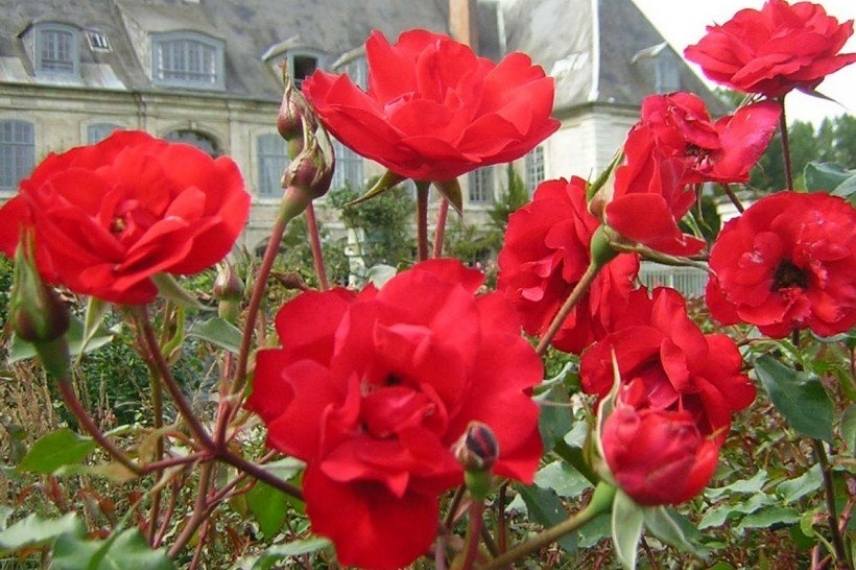
Cluster-flowered rose ‘La Sevillana’®
- Subscribe!
- Contents
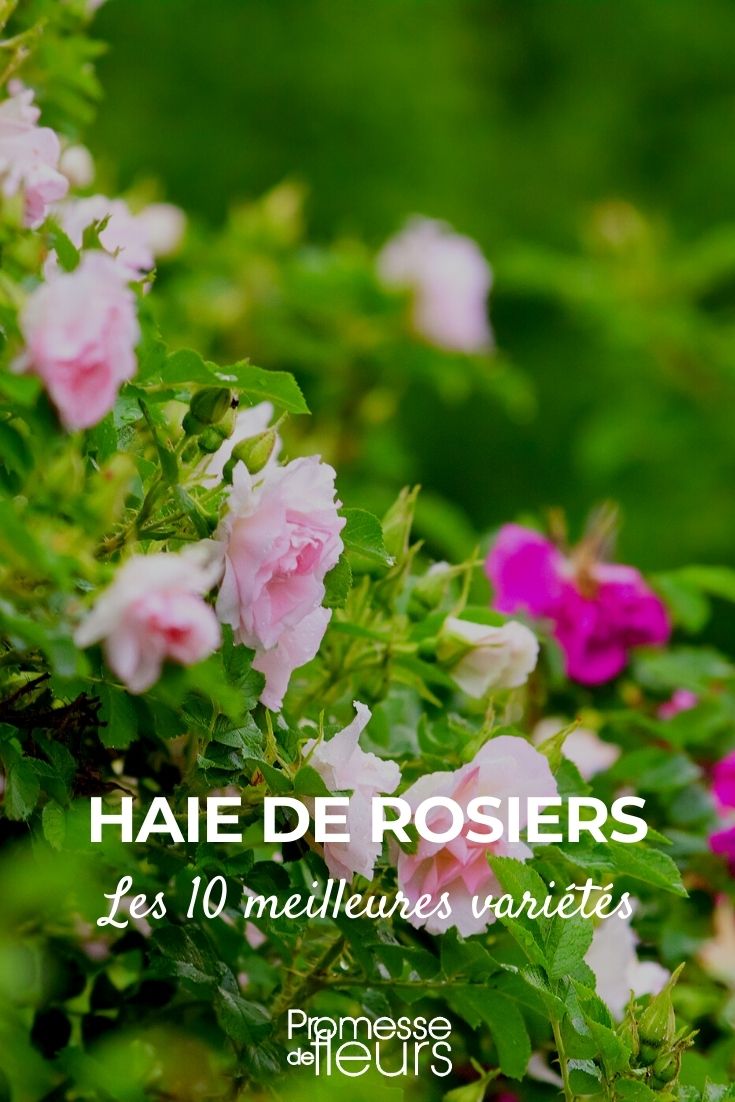































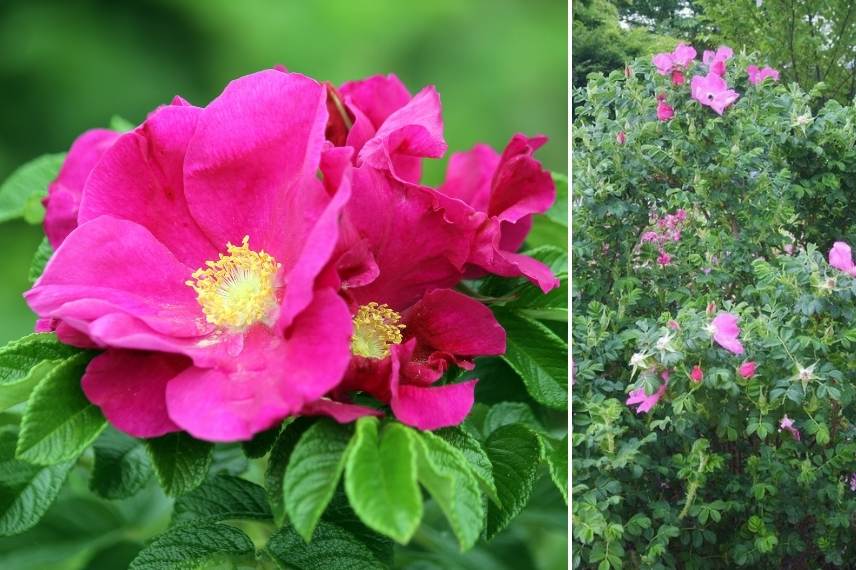


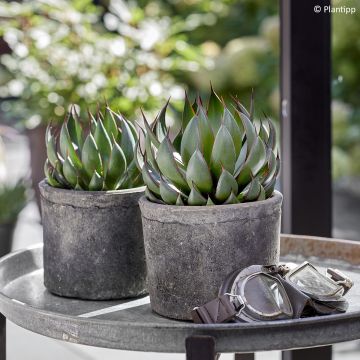

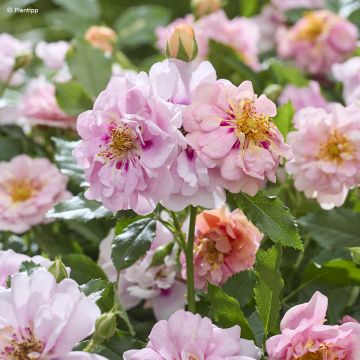
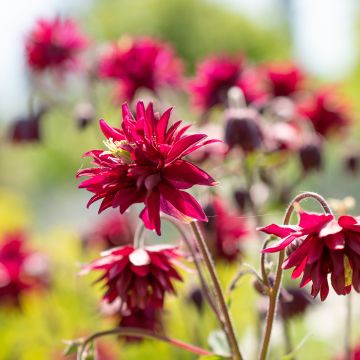
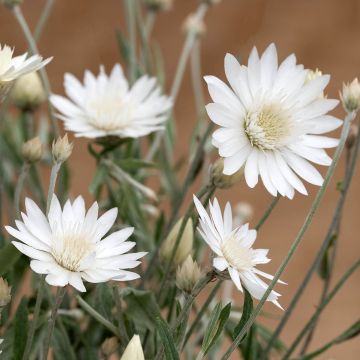
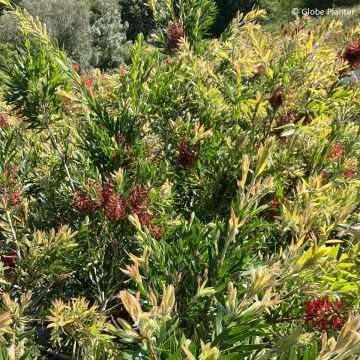
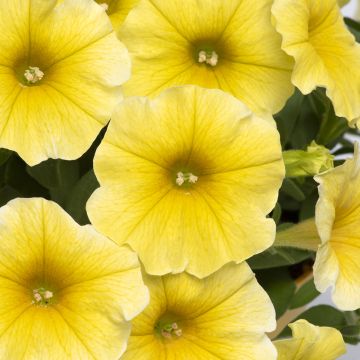
Comments